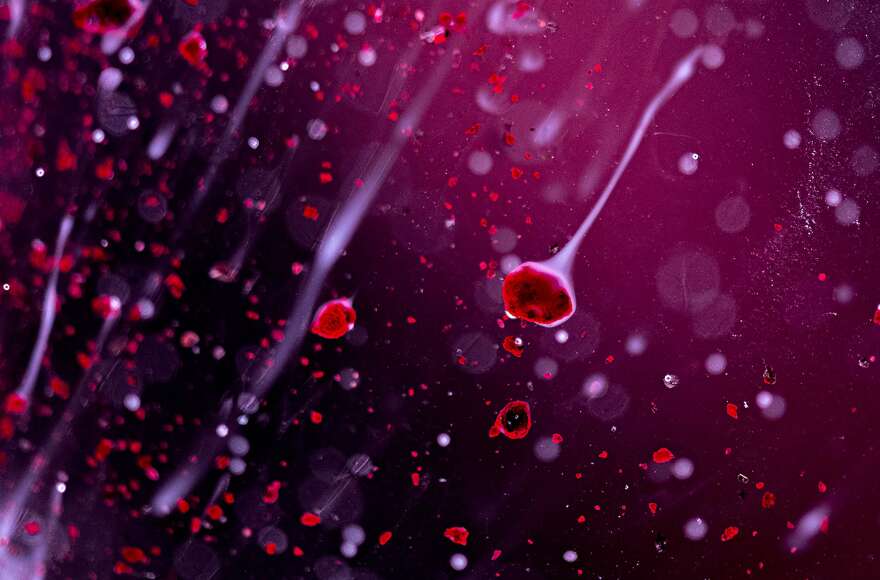A Milwaukee artist is drawing inspiration from the colors and materials we find in nature for a new exhibition at Arts @ Large titled "An Ecology of Marks."
Creator Jeff Zimpel is an artist in residence at Arts @ Large, located in Milwaukee's Walker's Point neighborhood. During grad school at UW-Milwaukee, Zimpel became intrigued by paint, its many textures and where we source it from.
“I wanted to see what was going on underside of a brush stroke,” Zimpel says.
Zimpel began turning to the natural world to gather his painting supplies. "For instance, during quarantine, I started going up to where I grew up, which is the Chequamegon National Forest, and I would venture off the path because I noticed that off the path, there was much more vibrancy in terms of color calling out," Zimpel says. "I would inevitably stumble on a stream, and that stream would just be peppered with red ochre. And red ochre is one of the oldest materials for painting that humans have used, and here it was just little vibrant red glowing orbs on the bottom of the stream, and I would need very little bits of it to be able to do this."

For this project, Zimpel trapped natural and commercially made pigments in resin tiles about the size of a post-it notepad and photographed them.

“Resin gives me this 360-degree view. I created a mini photo studio so I can light these little sculptures in paint, and then I go on the deep dive with my macroscopic lenses and explore them and come up for air with really amazing things,” Zimpel says.
He continues, “During quarantine I connected with pigment makers who live all over the world and they started sending me little minuscule amounts of pigment, so we’re looking at something, this one mark is made up of four pigments: one from Russia, one from Cincinnati and this one is from Brazil and then this is from Palo Duro Canyon in Texas."
You can see Zimpel’s artist journey on the walls of the Arts @ Large gallery through a cascade of colors and textures, which is on display until the end of March.
Zimpel points to one photograph that captures a breathtaking blue image that he says captures about 1/200 of a brush stroke.

“This is one of the most precious pigments that has ever been used, which is lapis lazuli ultramarine blue. During the Renaissance this would have been more valuable than gold. It’s reflecting light in a billion beautiful ways ... when I look at it I see light interacting with this precious earthly dust,” he says.
Zimpel invited fellow artists to share their work in the exhibition. He points to a framed piece of brilliant blue.

“This is Keith Pitts, I went to graduate school with him at UWM. He created a perfect diamond shape [of powdered pigment] encased within this sculptural object. He sent it by mail and by the time it got here the powdered pigment had shifted and moved and turned into something he couldn’t expect, which is really beautiful,” Zimpel explains.
Part of Zimpel’s mission as an artist in residence is to inspire others to make their mark, from grade school children to older adults. Zimpel explores each mark in his mini photo studio, captures an image and sends it to the mark maker.
“With the workshops we’ve had already, people would say I’m not an artist or I can’t draw ... but if you photograph what’s going on in that mark and it's just immense, vast complexity, I think people get really surprised by their power and by what they’re capable of setting into the world with little to no effort,” he says.
"An Ecology of Marks" closes March 31 with a celebration of art, music and dance and the opportunity for visitors to make their mark.
Have an environmental question you'd like WUWM's Susan Bence to investigate? Submit below.
_






